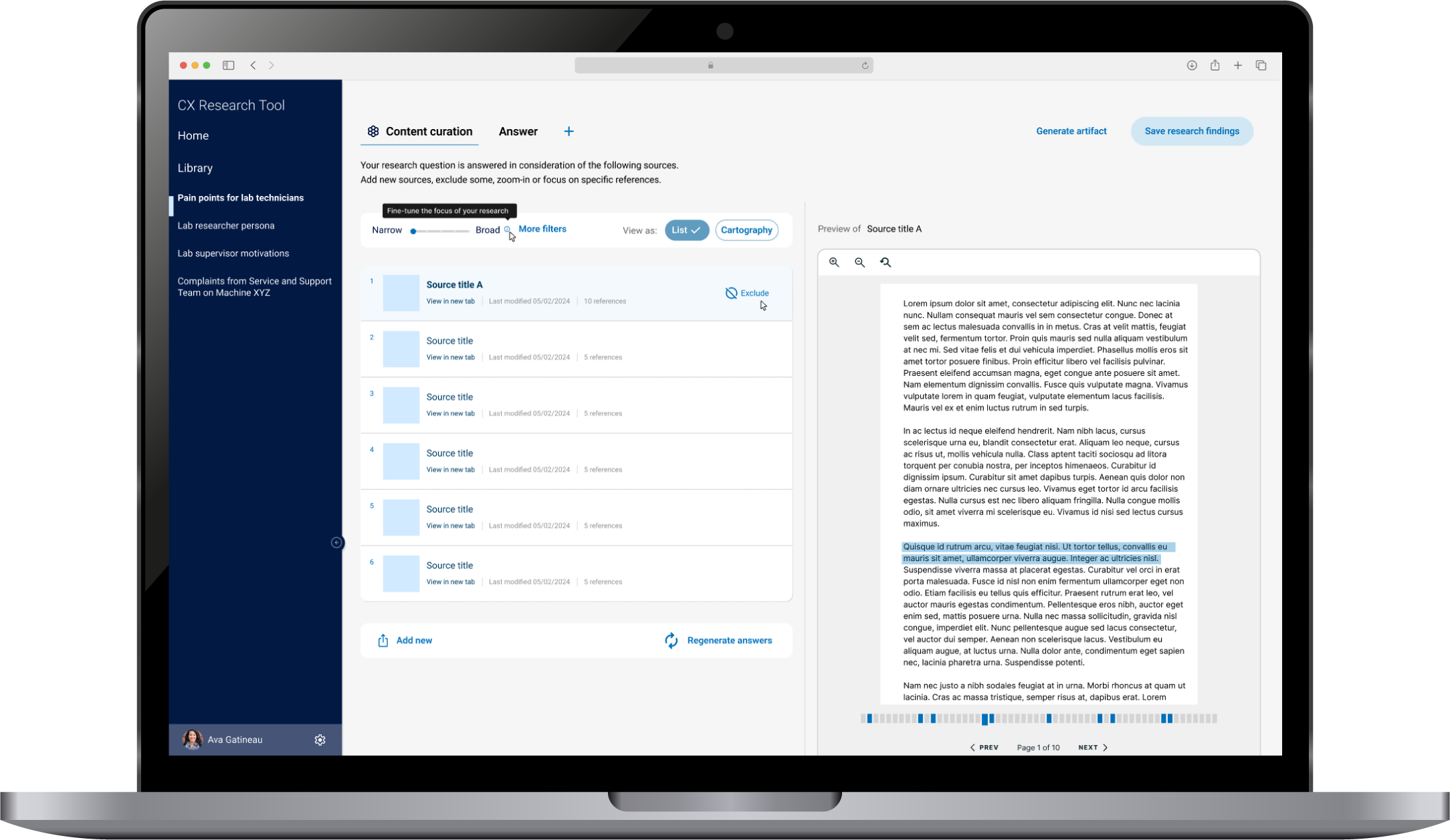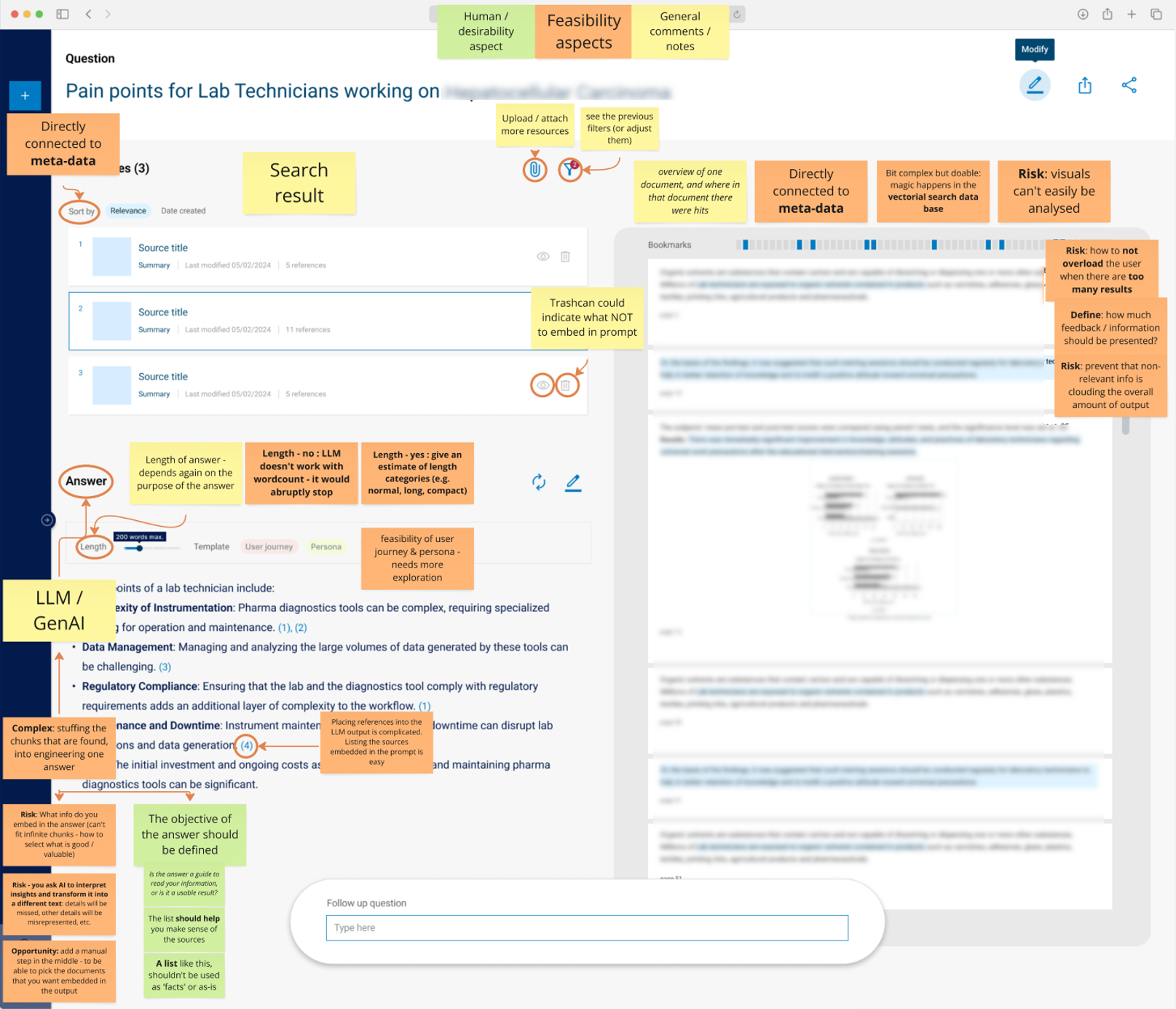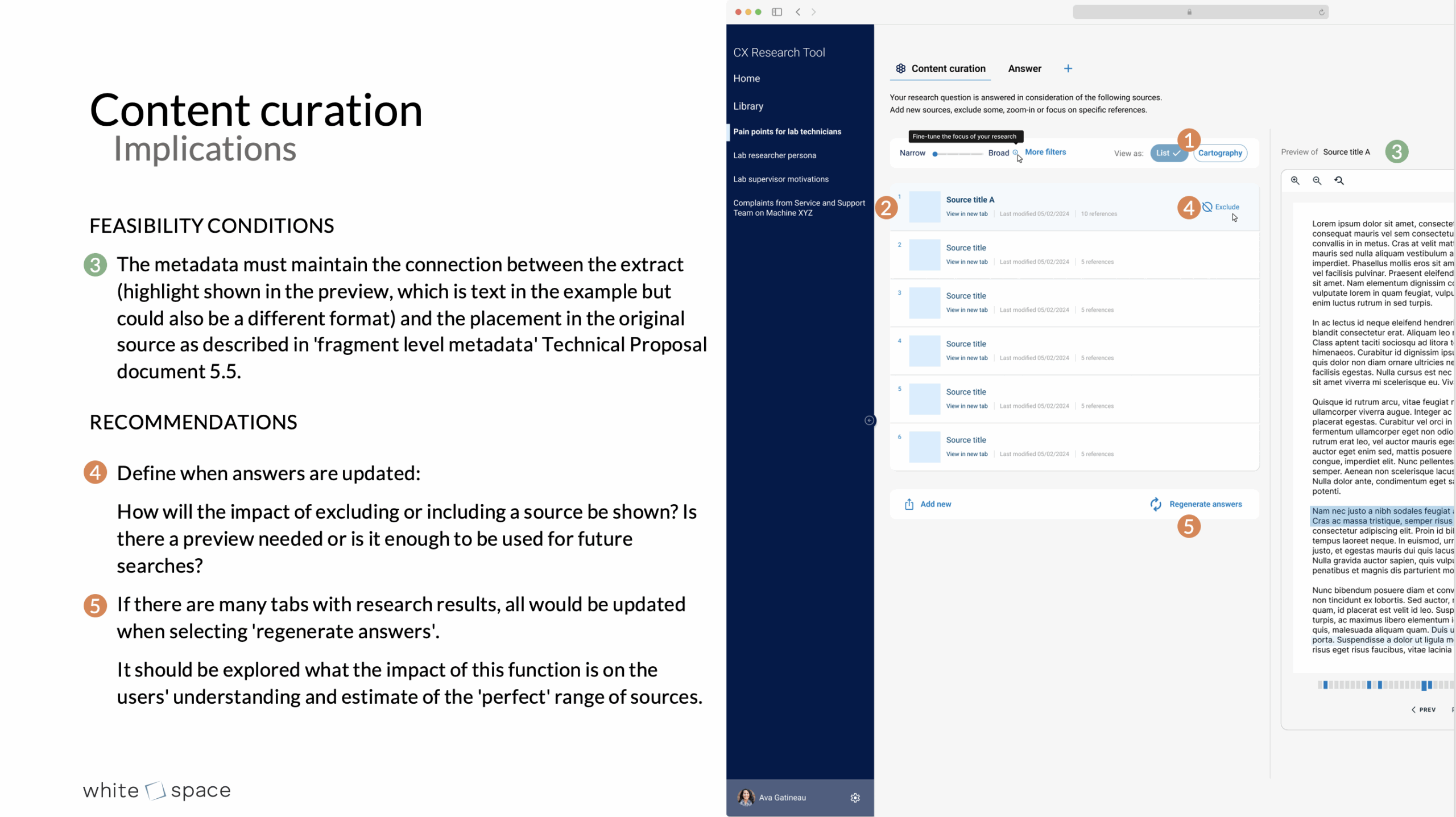Tapping into the world of AI with a Design Thinking approach
Lessons learned on the frontiers of GenAI and Vectorial Search
By Roos Müller-Durieux, Strategy & Service Design Lead at Whitespace
Date: 28 April 2025
In Q1 2024, we completed a large-scale GenAI-driven project in the life sciences sector. The focus was on consolidating scattered customer data in different formats and for various purposes, and the goal was to “navigate and leverage vast amounts of collective intelligence related to Customer Experience data.”
The client had already done user research and defined the problem. Our role was to refine the problem statement, set a North Star vision, translate these into (visualised) opportunities, and create an actionable implementation plan. This project resulted in a proposal and implementation plan for a research tool that enables client stakeholders to search and interact with existing customer experience (CX) data.
I want to share three key challenges we faced and the lessons we learned from a Service Design perspective. Our internal team included me as the Service Designer and project lead, a UX designer, and an AI expert.

Challenge 1: Entering a new field can feel uncomfortable
Key Learning
Clear communication, active collaboration, and visuals are key when stepping into new areas.
Although I thought I had a basic understanding of AI, I quickly realized there were more layers of complexity than I expected. Integrating AI was new for the designer and me. For the tech expert, our Design Thinking approach was unfamiliar.
We enthusiastically jumped into the project but soon realized we needed to step back and address some friction. More than with other projects, we encountered the differences in our ‘language’, and we needed to make concepts concrete and include examples.
We work remotely and often strike a balance between meetings and allowing each person time to focus on their area of expertise. This time, we held extra collaborative sessions, using tools to visualize AI models (LLM setups and RAG models) and align them with product concepts and user journeys.
This collaborative and iterative approach helped us align the design and flow with user needs, while ensuring that everything is technically feasible and we have the knowledge to guide the implementation of the different elements.


Our highly visual way of working proved critical and helped tackle the next challenges, too.
Challenge 2: Diverging design approach vs. tech feasibility
Key Learning
Use visuals to communicate the North Star vision and explore and define what’s technically possible, with clear annotations.
Establishing feasibility with AI differs from many other technologies; it is not just a matter of ‘do we have the required data’ or ‘is there a way to calculate the desired results’, etc. With AI, the function is a black box. The lack of explainability makes it challenging to establish feasibility.
Design Thinking often encourages divergent thinking, postponing feasibility discussions to avoid limiting creativity. However, when working with relatively new technology, there was a fear of overpromising what was possible. We sometimes got stuck in discussions of limitations.
What worked was collaborating closely with our internal designer to visualize opportunities and add technical annotations. These visuals helped us differentiate between:
- NOW: Feasible with minimal effort, with minimal changes to the client's technical environment.
- NEXT: More complex ideas needing further exploration and requiring implementation changes.
- NOT (yet): Not feasible yet and out of scope.

This approach helped us move beyond the North Star vision, uncovering ideas the client hadn’t thought of but that added real value. We included this in a high-level presentation, connecting visuals with technical considerations. These technical considerations were linked to an in-depth feasibility study, guiding various implementation options and the requirements to ensure their feasibility.
Combining the two helped us align internally, gave the client a clear understanding of the topic, and helped the client take over ownership of the deliverables.
Challenge 3: Without a holistic understanding, there is a high risk that the implementation will fail
Key Learning
AI’s value comes when the entire flow is designed, and the required behaviour change is defined and guided.
Like many other projects, implementing AI is not just a matter of back-end changes. In this case, how employees interact with knowledge systems and how they save, search, and update files impact the value of the search functionality.
We learned that the project’s value increased when we designed the full user flow and included change strategies, like guidelines for data hygiene (e.g., when insights become outdated) and processes for saving and categorizing data.
Besides, a commonly heard myth that AI can “think” or be “creative” often popped up during the project. AI is highly effective at generating fake responses, regardless of their accuracy. We worked to debunk this myth, clarifying that AI’s role is to assist in gathering, organizing, and communicating information based on searches and queries.
Conclusion
AI is still a relatively new field, and its feasibility and complexity remain unclear to many. This lack of clarity creates a high risk of false assumptions and inflated expectations. Holistic Service Design, combined with a creative Design Thinking approach, is an ideal match. Its interactive and iterative nature helps bridge differences in professional ‘languages’ and aligns visionary goals with practical feasibility. At the same time, the holistic perspective supports clear communication of user expectations and the behavioral shifts needed for successful adoption.
How is your organization approaching AI implementation and building user trust in the outcomes? Curious about where and how we can support you? We’re always happy to discuss this evolving space!




